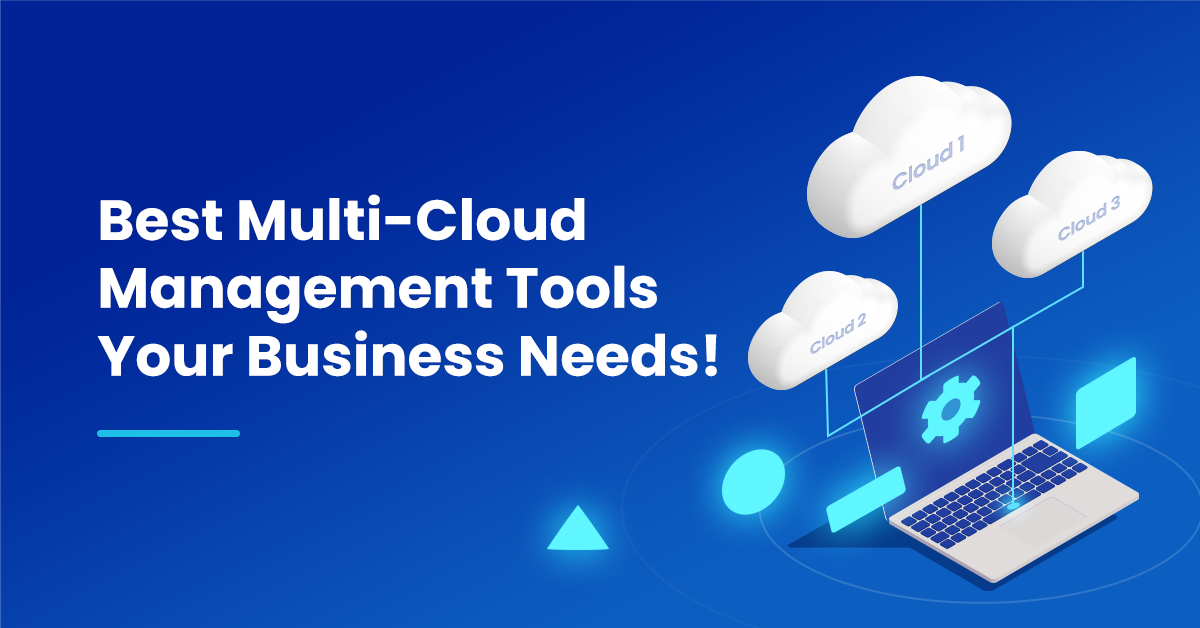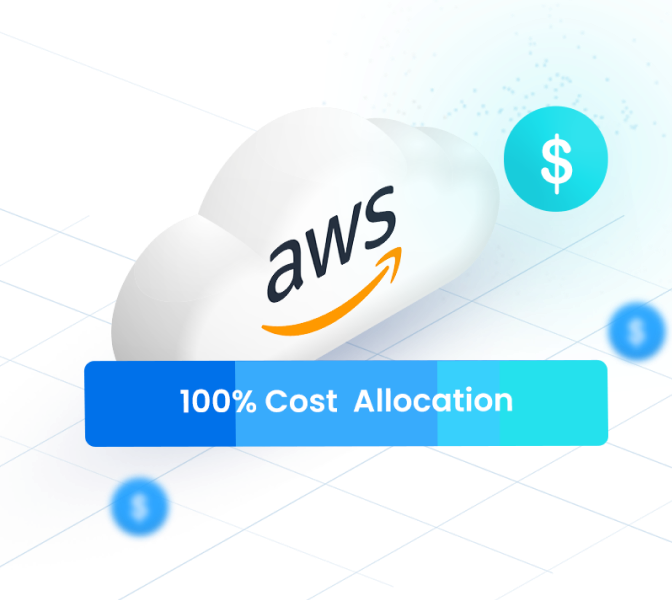Most organizations use more than one public cloud service provider because it helps them reduce dependency on just one vendor. It also makes it possible for them to optimize cloud usage and costs according to your requirements. Moreover, multi-cloud can provide more flexibility, prevent vendor lock-in issues, and improve overall application performance. With the increasing demand for multi-cloud, there is now a huge demand for multi-cloud management tools as well. But with the global multi-cloud management market valued at $8.03 billion in 2022, there are many options out there. In this blog, we take a look at what multi-cloud management tools are and the best multi-cloud management tools that you can choose for your organization.
What Is Multi-Cloud Management?
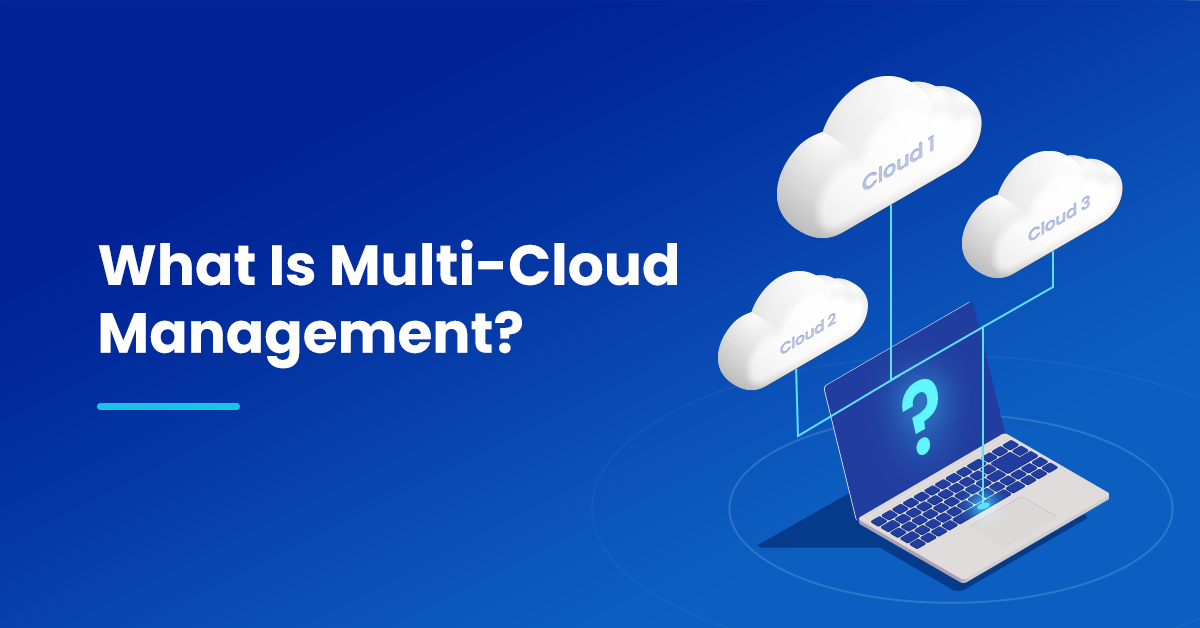
Multi-cloud management involves adding multiple public clouds from different vendors as part of your cloud strategy. It is the process of managing, optimizing, and securing multi-cloud deployment. When an organization uses a multitude of cloud providers, managing them together can be an incredibly complex task. Every cloud vendor has its own features, APIs, SLAs, and challenges. There is a need for disparate clouds to be connected and secure at the same time. Multi-cloud management strategies and tools aim to streamline the management of multiple cloud providers by centralizing the entire process. With multi-cloud management, you are majorly able to achieve the following goals:
- Self-service: By incorporating self-service capabilities, you are able to eliminate the complex process of IT resource provisioning entirely.
- Workflow automation: You can take actionable steps in real-time to manage cloud computing instances without any manual intervention.
- Cloud analysis and monitoring: You get a single view to monitor and analyze all of your cloud resources. You can also migrate workloads to different cloud environments for better optimization of resources.
What Are The Benefits Of Multi-Cloud Management?
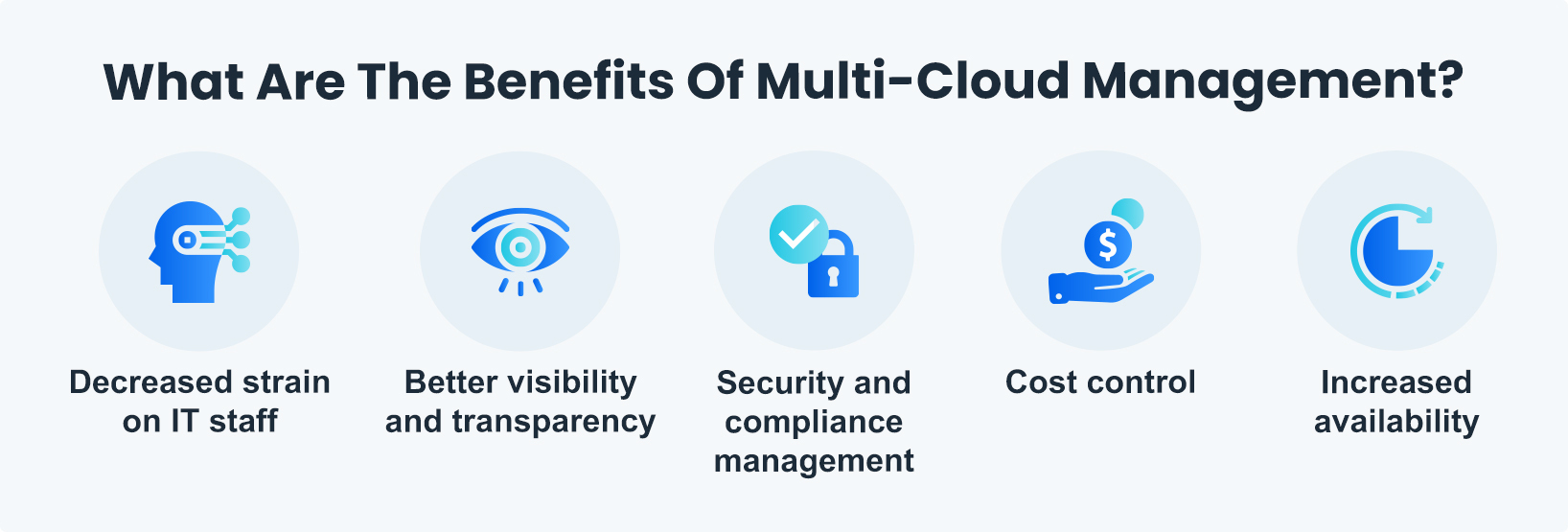
-
- Decreased strain on IT staff: When you have a tool simplifying and centralizing multiple cloud providers, your IT team can focus on its core responsibilities of managing different applications and workloads across the different clouds.
-
- Better visibility and transparency: Even in a complex environment, it becomes possible to have better visibility into workloads running across different cloud providers. Your team has complete transparency over the entire multi-cloud environment, which in turn helps improve efficiency.
-
- Security and compliance management: When you have multiple cloud providers, keeping up with their security policies and regional compliances can be difficult. By following a managed approach, you can enforce security policies across the different platforms better and deal with any security issues proactively instead of reactively.
-
- Cost control: In most cases, organizations adopt a multi-cloud strategy because they want to take advantage of the discounts offered by the different cloud providers. But managing multiple cloud environments can stack up on costs and increase your overall cloud budget. Multi-cloud management tools help you keep your cloud spending under control through intelligent data analysis.
- Increased availability: One of the primary reasons businesses adopt a multi-cloud strategy is to increase availability. You can duplicate and effectively migrate workloads to another cloud environment when one environment ends up failing.
Top Multi-Cloud Management Tools
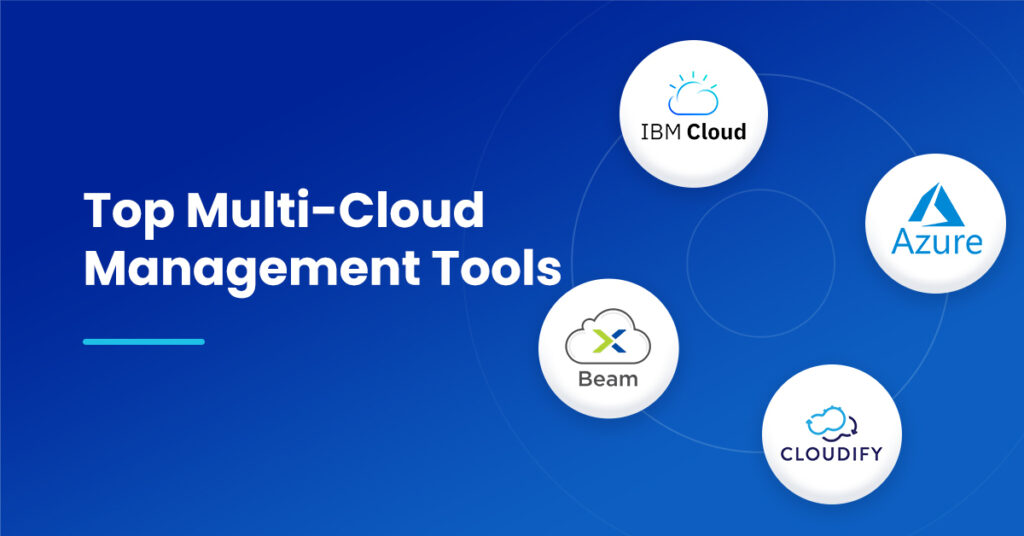
Multi-cloud management tools can not only help make the most of multi-cloud environments, but they can also effectively circumvent the many challenges associated with multi-cloud. Here are the top multi-cloud management tools:
1. IBM Multi-Cloud Manager
With IBM Cloud Manager, organizations can effectively manage environments across different Kubernetes clouds and customers. The platform integrates all the environments into one centralized view for better control. It provides configuration tools, application backups, disaster recovery, and the option to automate processes across all workloads. Multi-Cloud Manager’s biggest strength lies in helping improve security and governance with configuration tools. But IBM Multi-Cloud Manager is more suitable for enterprise-grade organizations that majorly use containerized software.
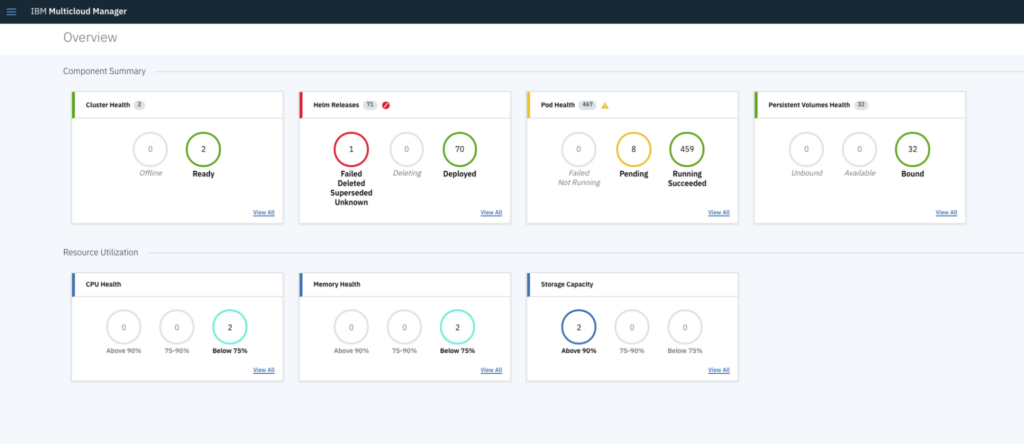
2. NCM Cost Governance (formerly Beam)
NCM Cost Governance (formerly Beam) is a multi-cloud management software designed to provide deep insights into cloud consumption patterns, cost optimization, and security compliance. It can also make recommendations for cloud cost savings. Nutanix provides cloud consumption reports, rightsize resources, recommendations for cloud cost savings, and the option to define tags.
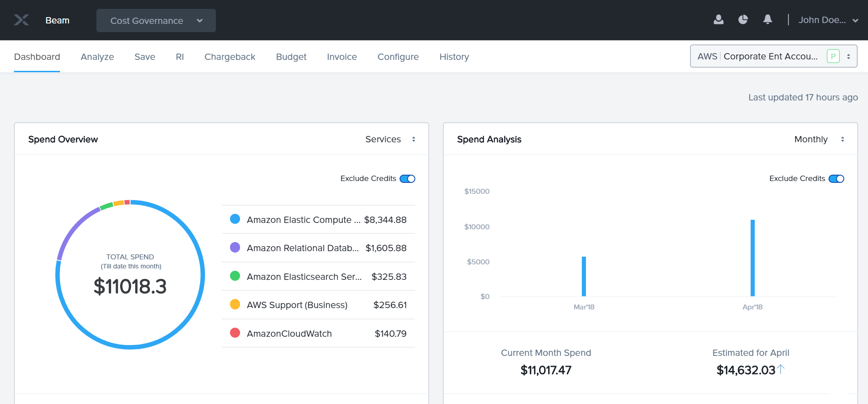
3. Cloudify
Cloudify is an open-source multi-cloud management software for managing and automating multi-cloud applications. Every environment has high-level codes that can be reused like templates to run applications. Its other features include deployment management, Python support, and role-based access control. Though since Cloudify is open source, its features are limited and its interface isn’t as user-friendly All in all, it is more suitable for deployment services rather than cost-saving measures.
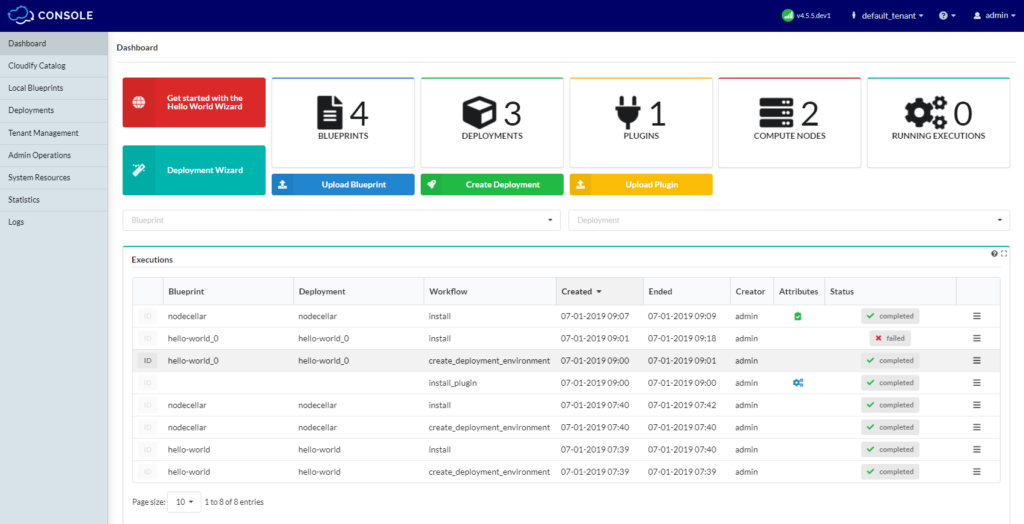
4. Microsoft Azure
Microsoft Azure provides secure management of on-premises, public cloud, multi-cloud and edge environments. It allows you to manage and govern your cloud resources through a single control panel. You can build and deploy applications everywhere in your multi-cloud. Azure is also an enterprise-grade platform that is more suitable for organizations that are looking to modernize their IT infrastructure and go the hybrid way. As a result, Azure does not address many of the complexities that come with today’s multi-cloud environment.
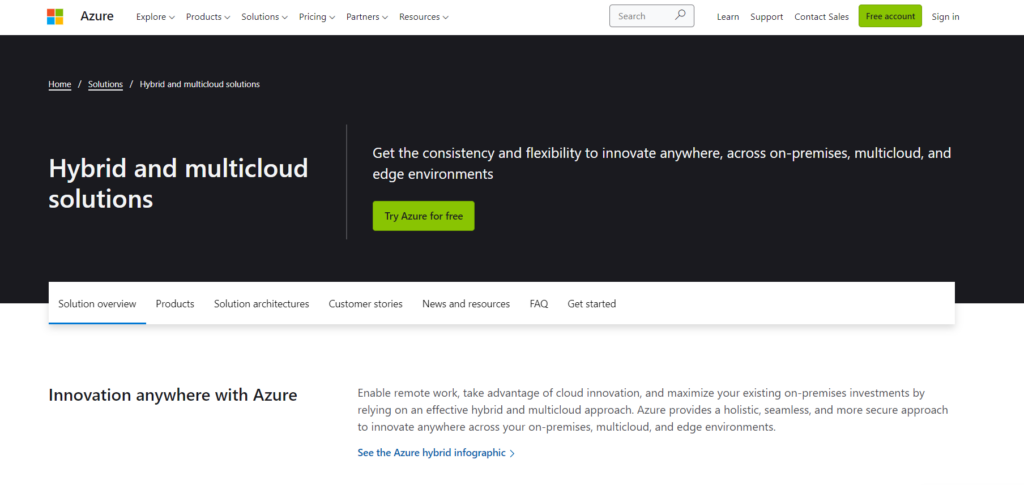
What Are The Challenges To Multi-Cloud Management?
Even with tools in your arsenal, there are some challenges and limitations to multi-cloud management. Increased complexity: Multi-cloud environments are inherently more complex and it can be challenging to toggle between the different cloud providers for effective cloud management. Integrating different cloud providers: To leverage the power of multi-cloud, you need applications that can move across different cloud environments without any integration problems. But this can be rather difficult to achieve due to the differences between the different cloud providers. Managing cloud billings: Every cloud provider had their own pricing structure, sizing units, billing cycle, and bill formats. As a direct result, managing cloud bills and costs associated with different cloud providers can become incredibly difficult.
Is Multi-Cloud Strategy The Right Approach For You?
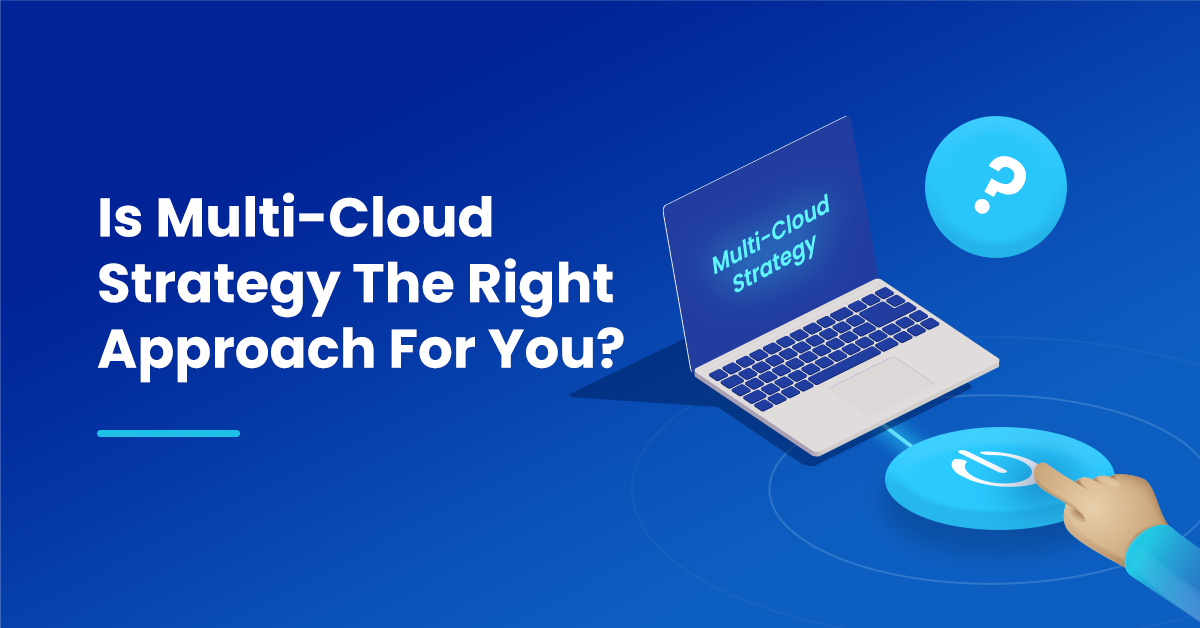
Even though multi-cloud may seem highly attractive, there is no denying that it’s also a complex cloud environment, making it highly challenging for internal teams to manage. Not to mention, using multiple cloud providers can also significantly drive up your costs. That is the reason why most organizations only end up adopting multi-cloud out of utmost necessity. That is also the reason why AWS continues to capture the majority of the cloud market share. Thus, when it comes to cloud management, AWS cloud optimization tools rule the market and the best AWS Cloud Management Tool can help you save a lot in comparison to diverse focussed multi-cloud tools! If you are planning to move forward with multi-cloud, then here’s the question you should be asking– Is multi-cloud the right approach for you? Is it possible to achieve the same with a single cloud provider which will not only simplify the process, but also reduce costs significantly? But in the end, if you are an AWS user, you need to choose a focused AWS cost optimization tool.
How Can nOps Help You Streamline Your Cloud Cost Management?
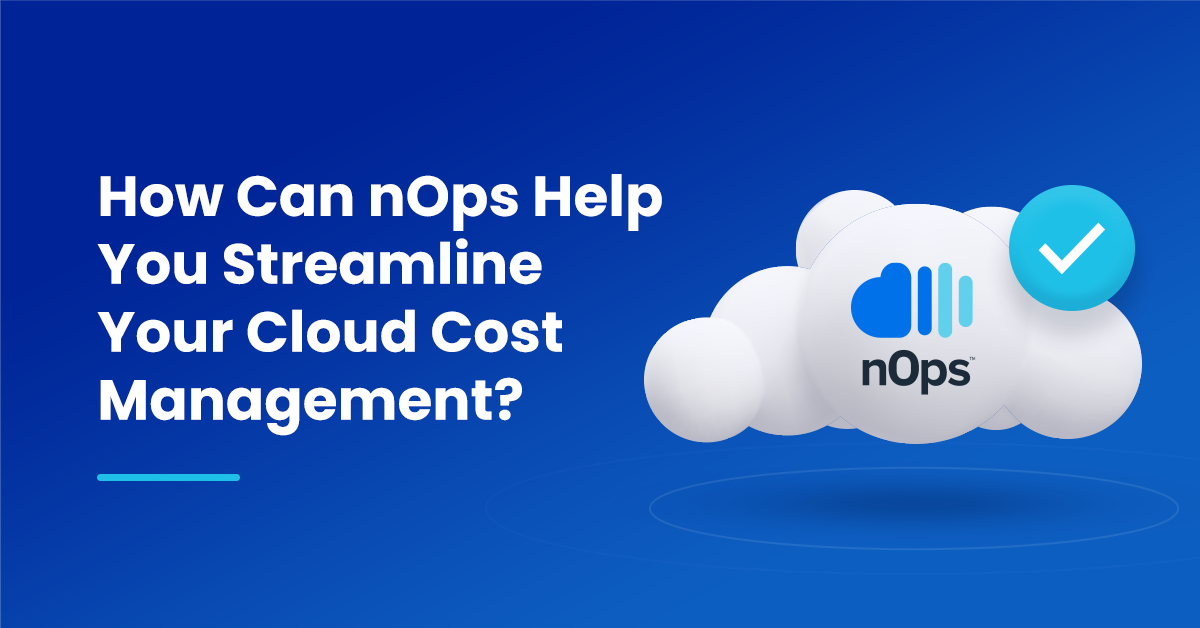
-
- Efficient cost allocation reports and tags
-
- Rightsizing recommendations for resource utilization
-
- Continuously monitoring and optimizing instances for maximizing cloud savings
-
- Adjusting AWS EC2 commitments in real-time for optimal commitment utilization
-
- Support for all the major compliances including HIPAA and SOC2
-
- User-friendly interface to better manage cloud instances and resources
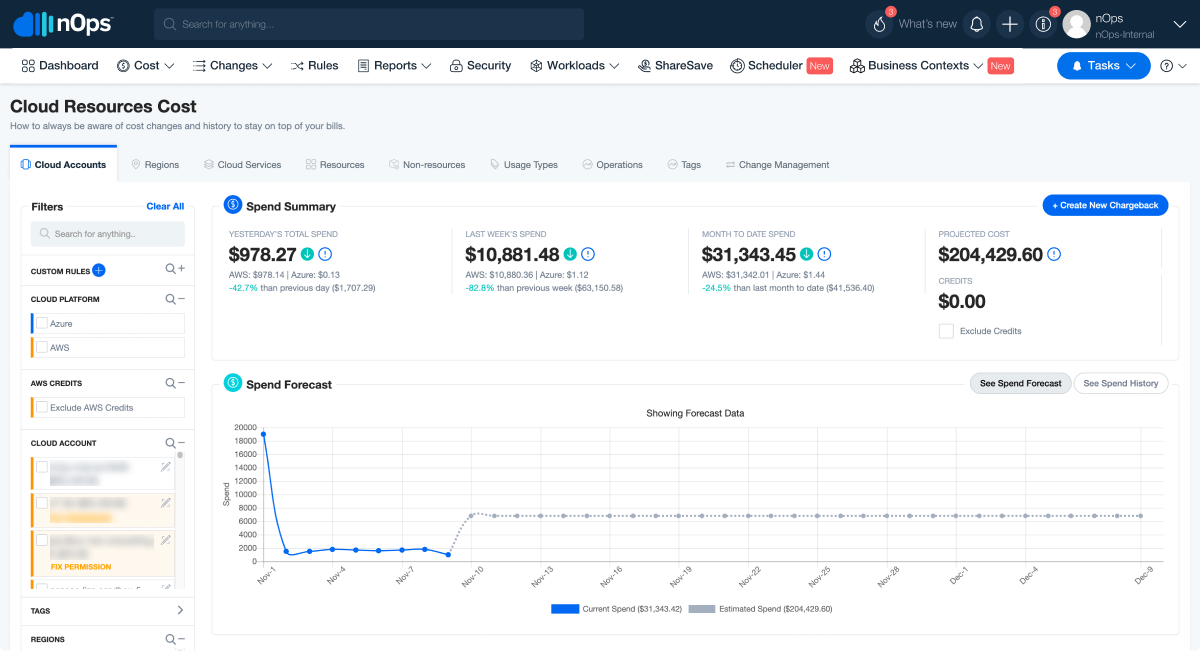
Your team focuses on innovation, while nOps runs optimization on auto-pilot to help you track, analyze and optimize accordingly! Our customers can benefit in two key ways:
- First, pay less for what you use without the financial risk.
- Second, use less by automatically pausing idle resources.
Let us help you save! Sign up for nOps today.
- Increased availability: One of the primary reasons businesses adopt a multi-cloud strategy is to increase availability. You can duplicate and effectively migrate workloads to another cloud environment when one environment ends up failing.
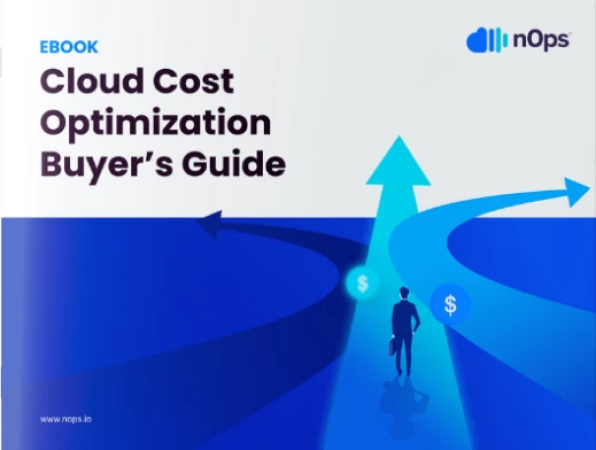
Top Multi-Cloud Management Tools
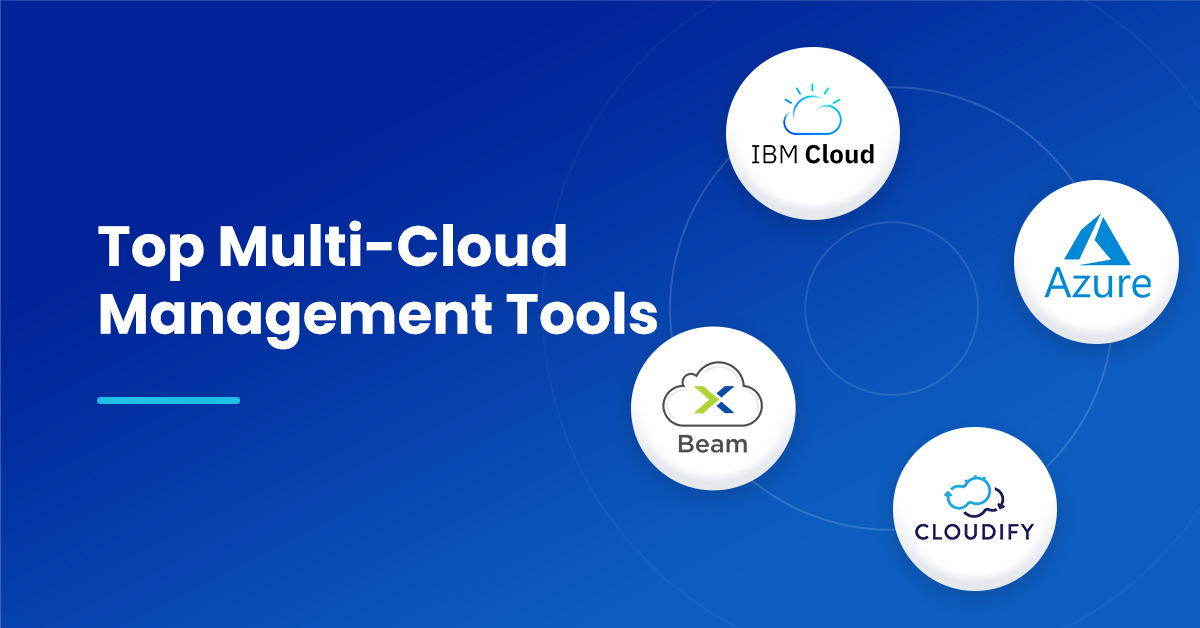
Multi-cloud management tools can not only help make the most of multi-cloud environments, but they can also effectively circumvent the many challenges associated with multi-cloud. Here are the top multi-cloud management tools:
1. IBM Multi-Cloud Manager
With IBM Cloud Manager, organizations can effectively manage environments across different Kubernetes clouds and customers. The platform integrates all the environments into one centralized view for better control. It provides configuration tools, application backups, disaster recovery, and the option to automate processes across all workloads. Multi-Cloud Manager’s biggest strength lies in helping improve security and governance with configuration tools. But IBM Multi-Cloud Manager is more suitable for enterprise-grade organizations that majorly use containerized software.
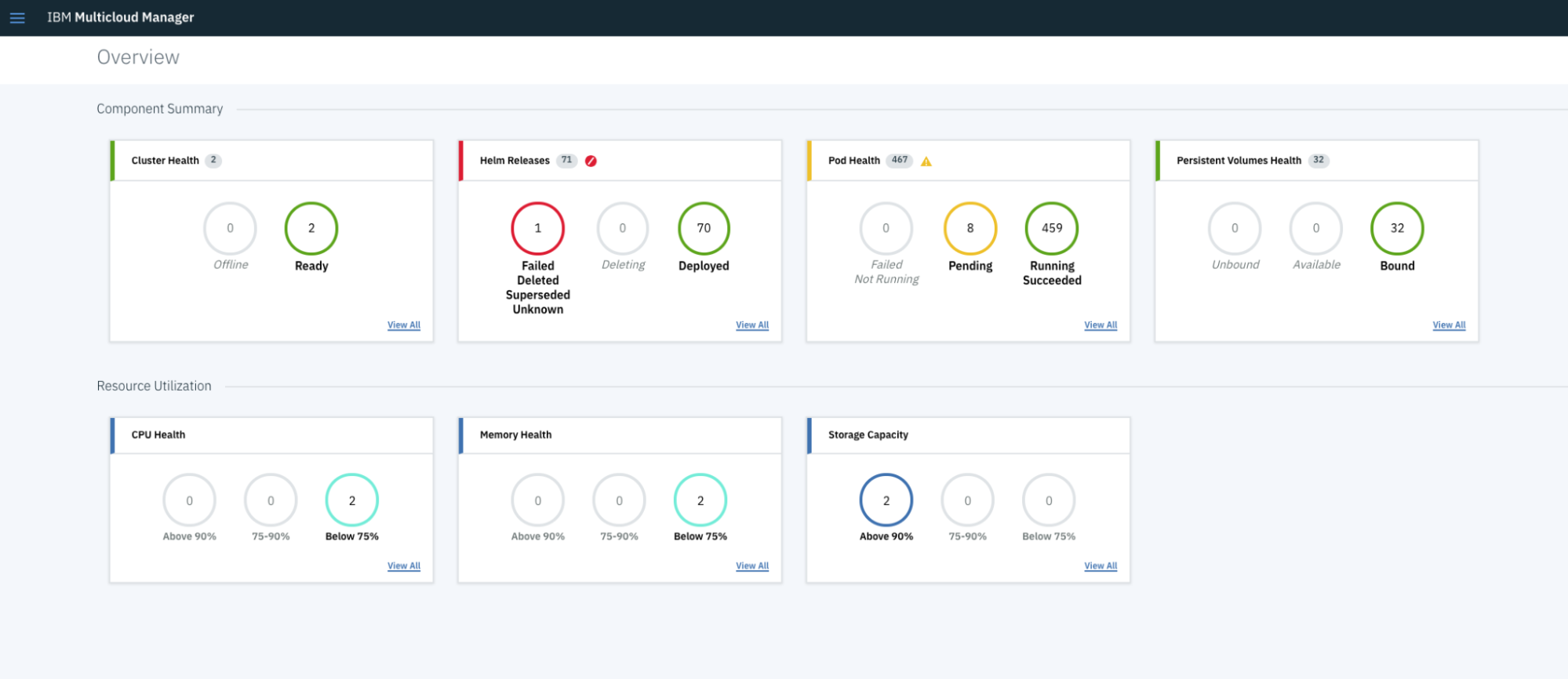
2. NCM Cost Governance (formerly Beam)

3. Cloudify
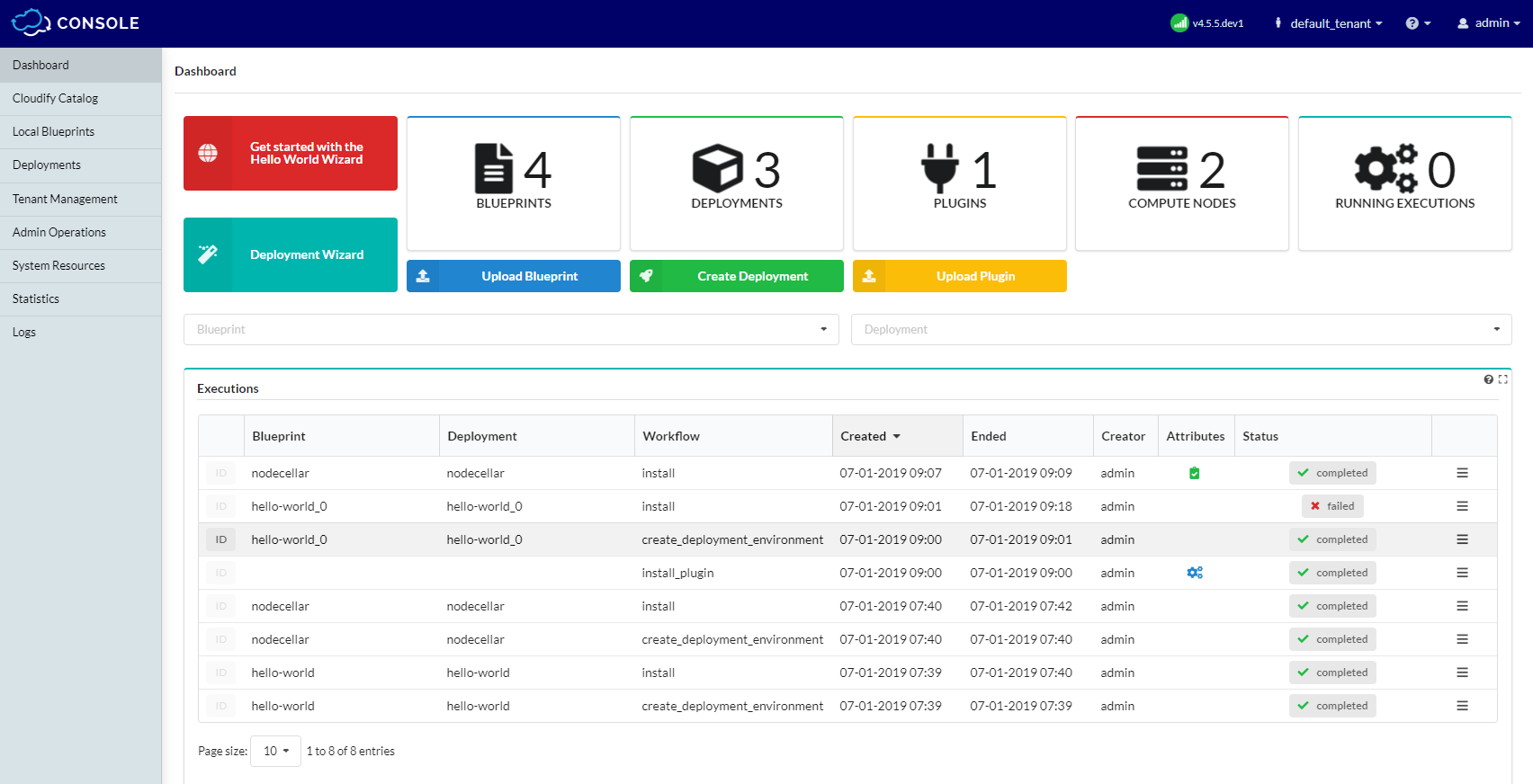
4. Microsoft Azure
Microsoft Azure provides secure management of on-premises, public cloud, multi-cloud and edge environments. It allows you to manage and govern your cloud resources through a single control panel. You can build and deploy applications everywhere in your multi-cloud. Azure is also an enterprise-grade platform that is more suitable for organizations that are looking to modernize their IT infrastructure and go the hybrid way. As a result, Azure does not address many of the complexities that come with today’s multi-cloud environment.
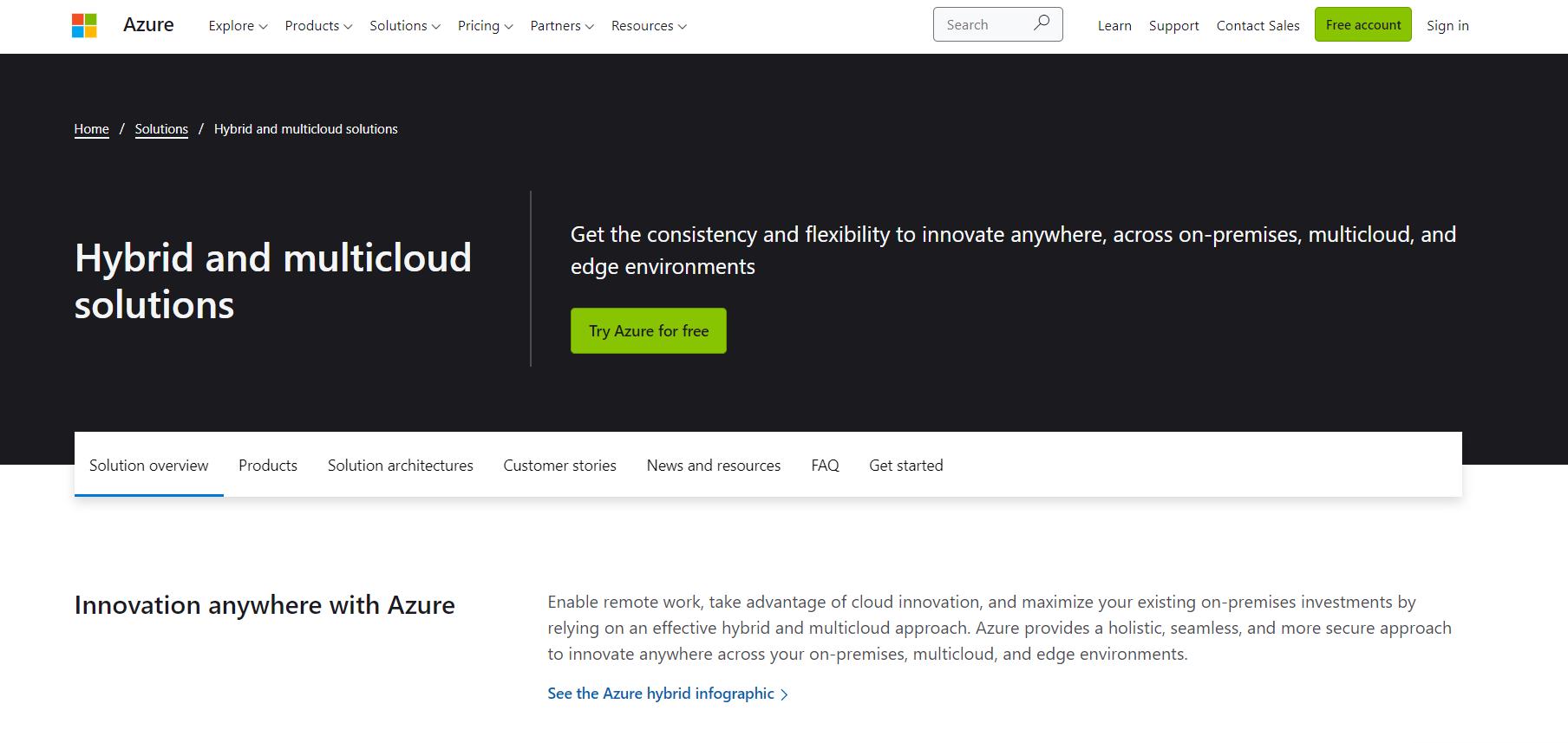
What Are The Challenges To Multi-Cloud Management?
Even with tools in your arsenal, there are some challenges and limitations to multi-cloud management. Increased complexity: Multi-cloud environments are inherently more complex and it can be challenging to toggle between the different cloud providers for effective cloud management. Integrating different cloud providers: To leverage the power of multi-cloud, you need applications that can move across different cloud environments without any integration problems. But this can be rather difficult to achieve due to the differences between the different cloud providers. Managing cloud billings: Every cloud provider had their own pricing structure, sizing units, billing cycle, and bill formats. As a direct result, managing cloud bills and costs associated with different cloud providers can become incredibly difficult.
Is Multi-Cloud Strategy The Right Approach For You?

Even though multi-cloud may seem highly attractive, there is no denying that it’s also a complex cloud environment, making it highly challenging for internal teams to manage. Not to mention, using multiple cloud providers can also significantly drive up your costs. That is the reason why most organizations only end up adopting multi-cloud out of utmost necessity. That is also the reason why AWS continues to capture the majority of the cloud market share. Thus, when it comes to cloud management, AWS cloud optimization tools rule the market and the best AWS Cloud Management Tool can help you save a lot in comparison to diverse focussed multi-cloud tools! If you are planning to move forward with multi-cloud, then here’s the question you should be asking– Is multi-cloud the right approach for you? Is it possible to achieve the same with a single cloud provider which will not only simplify the process, but also reduce costs significantly? But in the end, if you are an AWS user, you need to choose a focused AWS cost optimization tool.
How Can nOps Help You Streamline Your Cloud Cost Management?

-
- Efficient cost allocation reports and tags
-
- Rightsizing recommendations for resource utilization
-
- Continuously monitoring and optimizing instances for maximizing cloud savings
-
- Adjusting AWS EC2 commitments in real-time for optimal commitment utilization
-
- Support for all the major compliances including HIPAA and SOC2
-
- User-friendly interface to better manage cloud instances and resources

-
- First, pay less for what you use without the financial risk.
-
- Second, use less by automatically pausing idle resources.
.png?width=1920&height=1080&name=Landscape%20(4).png)

